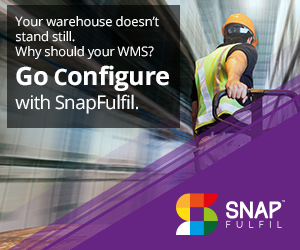Is your WMS well connected?
In today's modern e-commerce market, the warehouse has become the linchpin of any consumer retail organization. The demands placed upon warehouses require complex ecosystems of organization and management, hence the recent explosion in advanced warehouse management software.
However, this abundance of choice has a drawback: Companies may not be choosing a WMS with all the functionality to enable them to reach their full potential. On the other hand, the WMS they use might be more than capable for their needs, but too difficult to implement and properly utilize across the full spectrum of other software and processes. In either case, the warehouse, and therefore the entire business, could be limiting its competitive edge.
"The typical warehouse uses less than 65 percent of its full capabilities."
This problem might be more pervasive than many logistics experts realize. In an interview with Supply Chain 24/7, John Hill, a consultant with warehousing and logistics firm St. Onge Co., estimated that the typical warehouse operation utilizes no more than 65 percent of its full capabilities. This could ultimately come down to a breakdown in communication among key logistics stakeholders from the beginning.
"If you've done your homework, developed clear and understandable requirements, and you've come up with a checklist of what you expect from your WMS and how you expect it to perform, then getting the most out of your system really shouldn't be rocket science," Hill explained.
So how can warehouses be sure they are choosing the right WMS when considering the full scope of the task at hand? In general, they must ask if the system they will choose, or have already chosen, is able to connect the disparate, complicated moving parts that allow a warehouse meet its full potential.
Looking ahead
One of the best ways to understand where you might lie in terms of warehouse performance is by looking at where the industry as a whole is headed. A recent article from DCVelocity spoke with several logistics industry experts to get their take on where warehouse technology would be in the next few years. They all agreed that cloud warehouse management systems focusing on broader connectivity will lead the charge in the new generation of e-commerce, omni-channel retail.
"In the next few years, we are going to see increased functionality from cloud-based logistics solutions and greater potential to integrate applications," Chris Elliot of Blue Horseshoe told DCVelocity. "This will allow people to access applications from mobile devices anywhere they have an Internet connection. The benefits are the ability to be more agile and flexible in how solutions are delivered and how data is displayed by the business."

With the right WMS implementation from the beginning, warehouses can maximize throughput.
The panel noted that the logistics industry in general has been slow to adapt to the IT revolution, especially when it comes to investment in new systems and the people who understand them. This is a major reason why cloud services stand to benefit warehouse operations considerably. Their low cost of ownership and easy implementation make a fully connected warehouse entirely possible in a relatively small timeframe. They can also be quickly integrated with other business software and systems, like ERP, transportation management and finance systems.
Looking within
Perhaps the most obvious way to get a pulse check on where your warehouse operations stand is by conducting an in-depth analysis of historical operations. However, this is easier said than done, as it's only natural for us to see beyond problems inherent in "the old way of doing things." That's why, in his Supply Chain 24/7 interview, Hill suggested warehouse operators do their best to get an outsider's perspective of warehouse processes, especially while keeping some key points in mind:
- Is warehouse performance fitting in with larger organizational goals? E-commerce demands full organizational connectivity and visibility from the top down. It also requires logistics systems to be integrated into many other parts of the business, whether it's an ERP system or transportation management. Without a well-connected WMS in place, this could prove challenging.
- Are you taking full advantage of analytics and metrics? It's nearly impossible to understand past performance without accurate, reliable and easy methods of tracking it. A cloud WMS can not only track and store this data, but make it easily accessible as well.
- How are you aligning people and process? The best WMS isn't much good without the right people to implement it, train others to use it and meet performance goals. Take a look at the functionality of a WMS and how it fits into organizational design.



